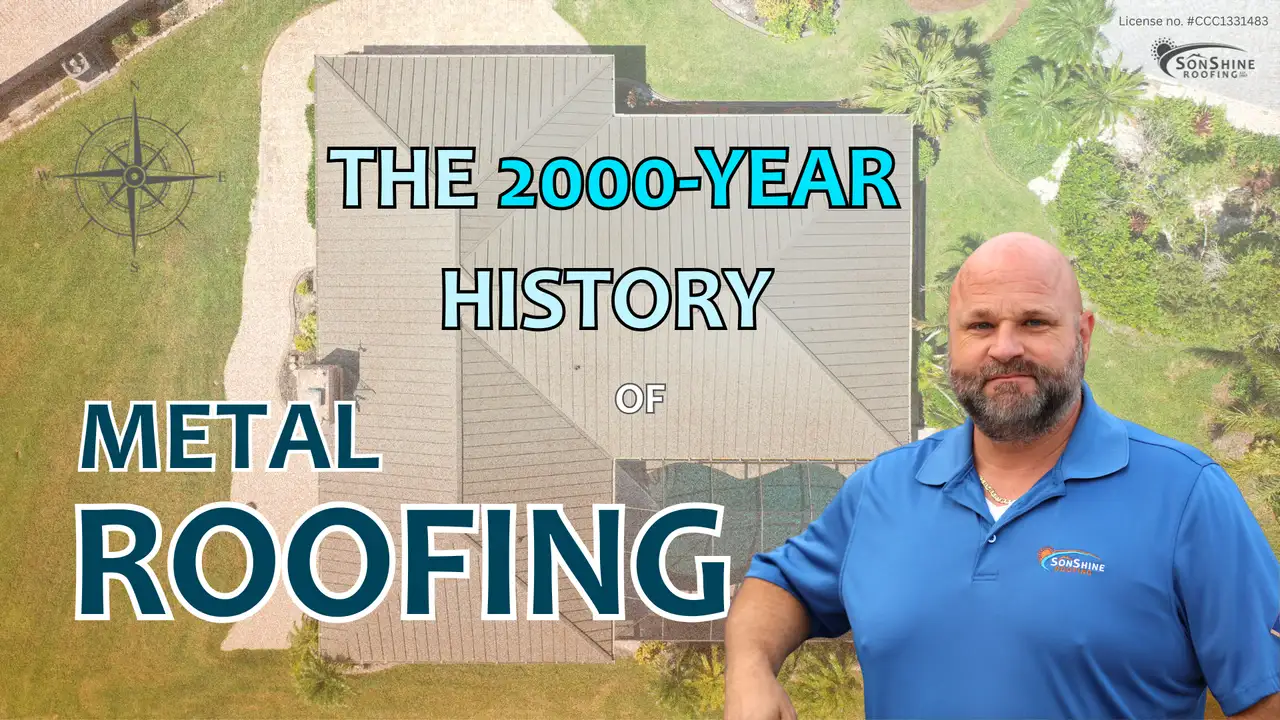10 DIY Roof Maintenance Tips Every Homeowner Should Know
Maintaining your roof is essential for protecting your home from the elements and avoiding costly repairs down the line. While some roofing tasks require professional expertise, there are several safe and simple maintenance steps you can perform yourself to keep your roof in top condition. SonShine Roofing in Sarasota, FL, is here to guide you through these easy-to-follow tips.
-
Perform Regular Visual Inspections
Why It’s Important: Regular inspections help you spot minor issues before they become major problems.
What to Do: Use a pair of binoculars to examine your roof from the ground. Look for missing, cracked, or curling shingles, as well as signs of mold, mildew, or algae.
Tip: Conduct inspections at least twice a year—preferably in the spring and fall—to catch any seasonal damage.
-
Keep Your Gutters Clean
Why It’s Important: Clogged gutters can lead to water overflow, which may damage your roof, siding, and even your home’s foundation.
What to Do: Remove leaves, twigs, and other debris from your gutters and downspouts to ensure proper drainage.
Tools Needed: Ladder, gloves, gutter scoop, and a garden hose. You can find these supplies at Ace Hardware.
-
Trim Overhanging Branches
Why It’s Important: Overhanging branches can scrape your roofing materials and drop leaves and branches that accumulate moisture.
What to Do: Safely trim back any tree branches that are close to or touching your roof.
Safety Note: Use proper equipment or hire a professional if the branches are large or difficult to reach.
-
Remove Moss and Algae
Why It’s Important: Moss and algae can retain moisture, leading to roof deterioration and leaks.
What to Do: Apply a moss and algae remover designed for roofs, then gently scrub the area with a soft-bristle brush.
Tools Needed: Moss remover solution and a soft-bristle brush, available at Ace Hardware.
-
Check and Seal Flashing
Why It’s Important: Flashing seals the joints and seams on your roof, preventing water from seeping in.
What to Do: Inspect the flashing around chimneys, vents, and skylights for cracks or gaps. Seal any openings with roofing cement or silicone caulk.
Tools Needed: Roofing cement or silicone caulk and a caulking gun.
-
Replace Damaged Shingles
Why It’s Important: Damaged shingles expose your roof to water penetration and can lead to leaks.
What to Do: Carefully remove the damaged shingle and replace it with a new one. Ensure it’s secured properly to prevent future issues.
Safety Note: Only attempt this if you’re comfortable working on a roof and have the necessary safety equipment.
-
Clear Debris from the Roof Surface
Why It’s Important: Debris like leaves and branches can trap moisture, leading to mold growth and roof damage.
What to Do: Use a roof rake or a soft broom to gently remove debris from your roof’s surface.
Tools Needed: Roof rake or soft-bristle broom, which you can find at Ace Hardware.
-
Inspect Attic Ventilation
Why It’s Important: Proper ventilation prevents heat and moisture buildup, which can damage your roof from the inside out.
What to Do: Check that your attic vents are not blocked by insulation or debris. Clear any obstructions to allow for adequate airflow.
-
Check for Rust on Metal Components
Why It’s Important: Rust can weaken metal parts like flashing and nails, compromising your roof’s integrity.
What to Do: Look for rust spots on metal areas and use a wire brush to remove them. Apply a rust-inhibiting primer to prevent future corrosion.
Tools Needed: Wire brush and rust-inhibiting primer, available at Ace Hardware.
-
Schedule Professional Inspections
Why It’s Important: Professionals can spot issues that may not be visible during a DIY inspection.
What to Do: Even with regular maintenance, it’s wise to have a professional inspect your roof annually.
Contact Us: Call Sonshine Roofing at (941) 866-4320 to schedule an inspection.
Safety First!
- Use Proper Equipment: Always use a sturdy, well-placed ladder and wear non-slip shoes.
- Avoid Working Alone: Have someone nearby in case of an emergency.
- Be Mindful of Weather Conditions: Never perform roof maintenance during wet or windy conditions.
Tools and Supplies
For all your roofing maintenance needs, visit Ace Hardware for quality tools and supplies.
When to Call the Professionals
While these DIY tips can help maintain your roof, some situations require expert attention:
- Extensive Damage: If you notice significant wear or damage during your inspection.
- Leaks: Water stains on your ceiling or walls indicate a leak that needs immediate attention.
- Complex Repairs: Tasks like replacing large sections of shingles or fixing structural damage.
SonShine Roofing is here to help with any roofing concerns you may have. With years of experience serving Sarasota, FL, and surrounding areas, we provide reliable and professional services to keep your roof in optimal condition.
Get in Touch Today!
- Phone: (941) 866-4320
- Email: messages@next.next.sonshineroofing.com
- Address: 2555 Porter Lake Dr STE 109, Sarasota, FL 34240
By performing these simple maintenance tasks, you can extend the life of your roof and protect your home from the elements. Regular upkeep not only saves you money in the long run but also provides peace of mind.
Remember, when in doubt, it’s always best to consult with professionals. SonShine Roofing is committed to providing top-notch service to keep your roof—and your home—in the best possible shape.













